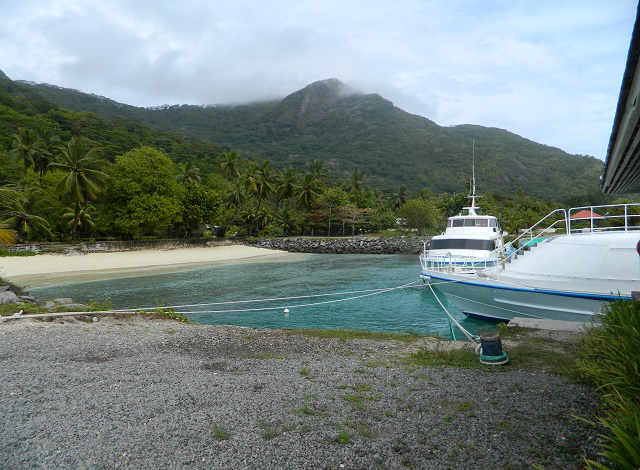Seychellois researcher sheds light on whether Silhouette Island's inhabitants are "culturally displaced"

Due to Silhouette's pristine nature, tourism became an economic mainstay. (Seychelles News Agency)
New research has started to determine the validity of labelling Silhouette Island's population as a culturally displaced people following large tourism developments on the island.
Cindy Moka, a researcher at the University of Seychelles (UniSey), began the research in June and presented her initial findings during one of the academic activities of the 2023 Creole Festival.
In her presentation entitled "Silhouette People, a Displaced and Forgotten Community," Moka details how the islanders' indigenous and traditional knowledge is slowly being eroded.
"I am hoping that once the research is completed, we may use the information gathered to include the island's inhabitants in community based tourism projects among others," she said.
Silhouette is the third largest of Seychelles and the first inhabitants moved to the island in the 1700s when the maroons fled from Mahe, the main island.
Maroons are African descendants of those who escaped from slavery and formed their own settlements.
 |
| Silhouette was seen as a hideaway for the Maroons. (Joe Laurence, Seychelles News Agency) Photo License: CC-BY |
Despite its size, the native population of Silhouette has been reduced to less than 10 and these are mainly elderly people.
Over the years, the authorities have declared the island's waters as a marine park and 93 percent of its landmass is also protected after the creation of the Silhouette National Park in 2010.
However, due to Silhouette's pristine nature, tourism became an economic mainstay on the previously mainly agricultural island. There are currently two guesthouses on the island, with the main hotel being Hilton Labriz Silhouette.
In her initial research Moka discovered that the remaining inhabitants' movement and status are dictated by the policies of the hotel.
With the introduction of tourism to the island, the people living there have been categorised into two main groups namely 'zabitan silwet' and 'travayer zil' or Silhouette inhabitants and the island workers.
In 1982, the largest group of inhabitants lived on the island and at the time the population was 255. In 2021, there were 350 people with only 11 Silhouette inhabitants.
Moka told SNA that she was mainly aiming to show that action needed to be taken "to ensure the cultural practices that are unique to that island were protected. Silhouette inhabitants have their own practices that set them apart from those living on Mahe, Praslin and La Digue."
She said the Tinge dance for example is one that is disappearing as is the use of traditional medicines.
 |
| Modestine Magnan, one of the oldest inhabitants of Silhouette during a coco-de-mer planting event. (Seychelles Nation) Photo License: CC-BY |
Although the research found that in 1995 people were still practising the dance, recent figures show that there were only five people left who knew how to dance the Tinge.
She added that through her research she found that "with the arrival of the five-star hotel, new restrictions have been imposed on the islanders and that there are places they are no longer allowed to visit and that they feel they are now treated like second-class citizens."
Moka added that "the islanders said they felt that they have been gradually displaced as they now find it impossible to remain on their island due to economic constraints or due to the lack of essential infrastructures."
In her presentation, Moka compared the inhabitants' plight to those of the Chagossians.
More than 2,000 Chagossians have been fighting to return to their home since they were expelled from the islands between 1967 and 1973 to allow the United States to build a military base on Diego Garcia, a Chaos island that belongs to the United Kingdom.
More than 200 were deported to Mahe, the main island of Seychelles when the country was still a British colony. The rest were deported to Mauritius, also a British colony at the time.
Moka explained that due to the tourism projects, the islanders have lost their status as Silhouette inhabitants do not even have the right to property and are not even considered as a community.
SNA spoke to a Silhouette inhabitant who had to move to Mahe, Roxy Athanase, who gave a picture of life on the island before the islanders had to gradually move away.
"I grew up on the island, and one thing I can honestly say is that the community on that island is made up of the most honest people I have ever met," he reminisced.
He added that the partnership with tourism is not one that is bad, but it should be done in a way that does not affect the island's original population.
"I hope the research and the findings fall on proper ears and that in the long run, we may also have a place where we can show our children where we used to play and visit our loved one's graves," he added.





